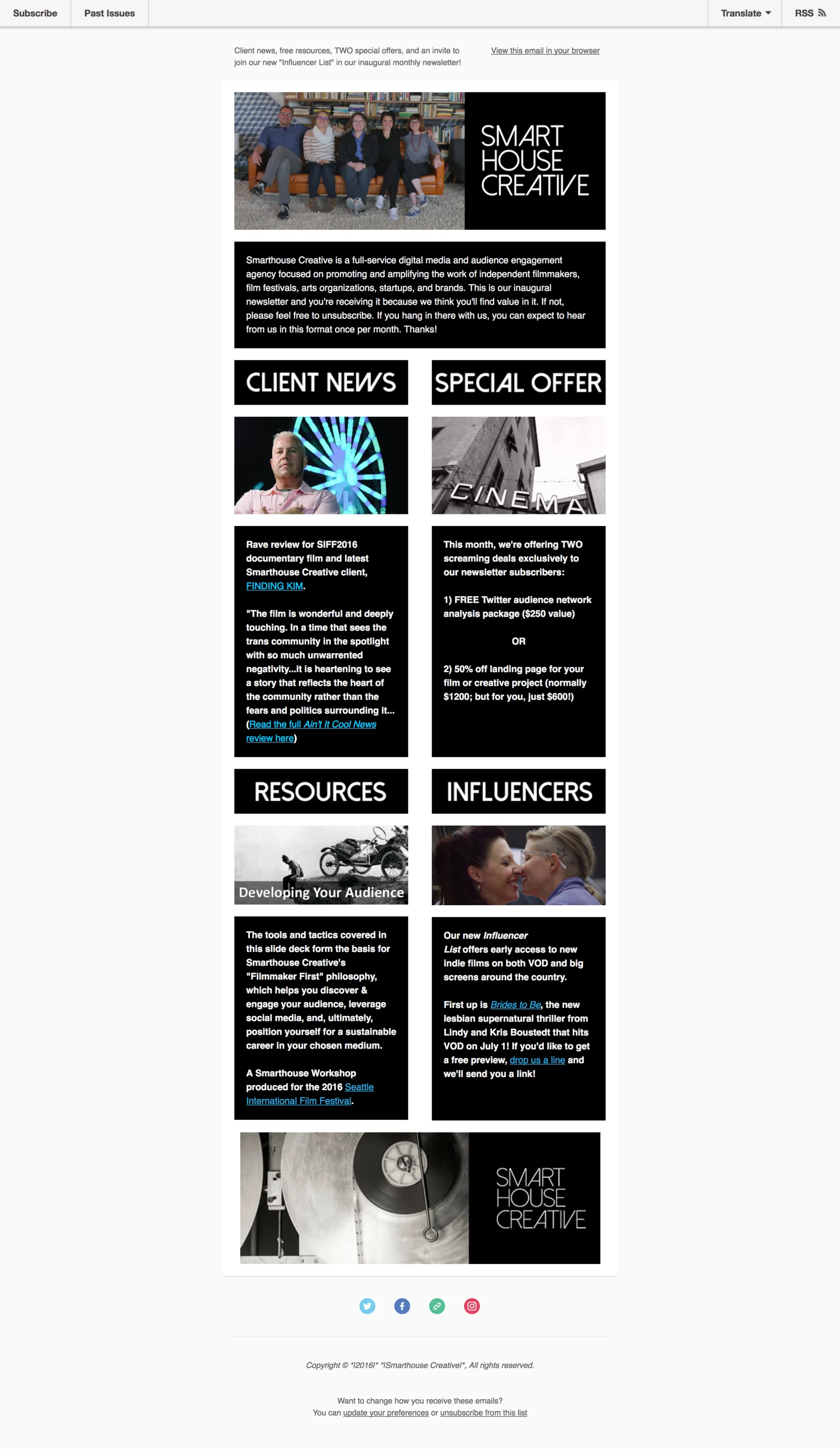You’ve been studying your audience relentlessly, tweaking your content to tick all the right boxes. And it’s working: Your open rates are booming, and your readers are clicking through. But they’re still not taking that last, ever-elusive step: the “forward to a friend.”
Creating shareable email content is a critical art that your small business needs to learn, tweak, and perfect. The impacts on lead generation and brand awareness are huge. But how do you nail this?
In the 2017 B2B Content Marketing Trends—North America report by the Content Marketing Institute and MarketingProfs, email emerged as the leading channel marketers use to distribute their content (a whopping 93%). Why? Because it’s direct and highly effective—your audience is already deep in the funnel. But to do it well, you need to think like a strategic content marketer. You need to build authentically useful content—guided by a razor-sharp, nuanced, and specific understanding of your reader sitting on the other side of the screen. The newsletter needs to be informative, targeted to the customer’s pain points, and highly engaging. Then you need to optimize it so that sharing is a no-brainer.
Here’s how to make an effective newsletter:
Be targeted and precise
The key here is precision and knowing your audience. In The Viral Email Report by the email analytics firm Litmus, the viral activity of 400,000 emails was measured and analyzed. The data revealed that email lists with smaller audience sizes were being forwarded more often. The conclusion is that because their lists were smaller, they were able to offer precise information that would personally resonate with people.
For instance, the report also found that the top 1 percent of forwarded messages contained photos of the recipients themselves—making it a no-brainer for them to forward the email along to share with their friends and family. If you’ve hosted an event, make sure to get everyone’s names and social media handles, so that you can tag them in photos and encourage them to spread the message.
Larger brands ran the risk of being bland and writing messages that were far too general—thus plummeting any chances of a share. The key lesson here is that as you scale, invest in targeting and segmentation in order to bring about that meaningful connection and write in a way that connects with the reader’s needs.
Be engaging
Now you need to deliver what this target audience wants: valuable, insightful content that will interest them. For Jay Clouse, an entrepreneur who builds community platforms in Columbus, Ohio, it’s all about connection. “There are way too many newsletters and way too little authentic connection,” he says. “To draw an audience into frequently opening and engaging with your pieces, they need to feel a connection to what is written. Connection comes from a combination of authenticity and providing value.”
Nail down a format and content mix that will delight your readers. And think about how it appears on the screen. The holy grail these days is that the newsletter is mobile-optimized, but beyond that—what format will work best?
For Brad Wilke, co-founder and principal of the creative PR and marketing firm Smarthouse Creative, it was about moving away from a traditional two-column and into something radically new: “We launched our email marketing effort with a very traditional newsletter in the two-column format that allowed us to tell a few client stories, offer a content marketing resource, and include one of our popular blog posts,” he says.
But after six months, they moved to a format that became highly focused on links, curating the most interesting stories out on the web and mixing in their own client content. This made the newsletter far more useful for readers and doubled open rates and click-thrus.
Build a narrative from subject to CTA
But all your hard work could go out the window if you don’t deliver it right. Gavin Hammar is the founder and CEO of Sendible, a UK-based social media management platform whose email database is currently at more than 80,000 users. “The key advice I'd give is to remind any author of any email that their target users probably receive over 100 emails a day,” he says. “Make your words count.”
By this, he means be utterly strategic in your subject lines. Hammar recommends using subject lines that are either humorous or directly align with a customer pain point, proving evidence in the inbox that you will be delivering value.
“Make your content float,” he says, “by which I mean, imagine they'll only read your subject line—what impression do you want to leave? Then imagine they'll only read your headline—will they understand very quickly what the email is about?”
Make sure the CTAs are non-generic and align with the narrative. And be specific: use a “Forward this to your network” call-to-action. Platforms like Keap offer additional tools such as social sharing—where if someone on your list shares the newsletter on Twitter, for example, and their friend clicks on it, an opt-in for the newsletter will pop up on their screen, thus taking the sharing power of a newsletter and maximizing reach.
Involve others—and resort to bribery
Finally, freebies. Why not? Deborah Sweeney is the CEO of MyCorporation, a provider of online document filing services, and she’s had success in running small business contests via her newsletter—and found them to be a reliable way to boost shares. She’s offered giveaways such as a free domain name or $350 in start-up cash from the Bank of America.
She also mixes in content by third parties. “Often those third parties share our newsletter with their outlets, so that expands readership as well,” she says. But like all the marketers and business owners we spoke to, Sweeney returns to the one key truth powering this medium: quality content. “Writing content that is relevant to small business—not sales-y and focused on what the customers need—is critical,” she says.




